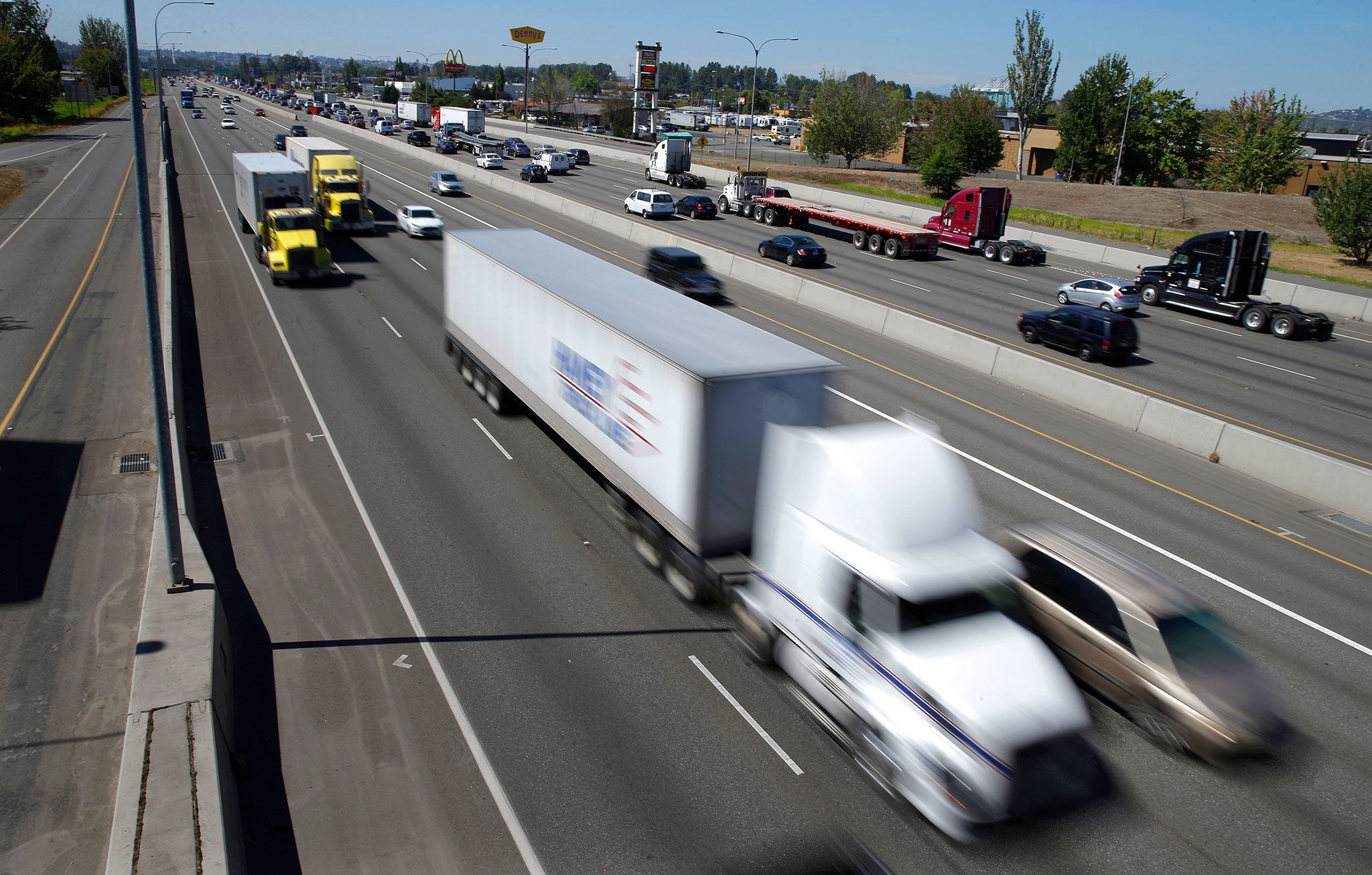Associated Press
DETROIT — The U.S. is seeking to forcibly limit how fast trucks, buses and other large vehicles can travel on the nation’s highways.
A new proposal Friday would impose a nationwide limit by electronically capping speeds with a device on newly made U.S. vehicles that weigh more than 26,000 pounds. Regulators are considering a cap of 60, 65 or 68 miles per hour, though that could change.
Whatever the speed limit, drivers would be physically prevented from exceeding it.
The government said capping speeds for large vehicles will reduce the 1,115 fatal crashes involving heavy trucks that occur each year and save $1 billion in fuel costs.
The proposal from the National Highway Traffic Safety Administration and Federal Motor Carrier Safety Administration is subject to public comment before becoming final.
While the news is being welcomed by safety advocates and non-professional drivers, many truckers say that such changes could lead to dangerous scenarios where they are traveling at much lower speeds than everyone else.
The rule has been ensnared in a regulatory maze in the decade since the nonprofit group Roadsafe America issued its first petition in 2006. The group was founded by Atlanta financial adviser Scott Owings and his wife Susan, whose son Cullum was killed by a speeding tractor-trailer during a trip back to school in Virginia after Thanksgiving in 2002. The nonprofit was later joined by the American Trucking Associations, the nation’s largest trucking industry group.
Owings said he’s happy that speed-limiting technology may be in place soon, but frustrated by how long it took.
“This glacial process, if you can call it a process, is not effective,” Owings said before the latest proposal arrived. “It’s easy to see why so many citizens are angry about the ineffectiveness of government.”
The government agencies involved will take public comment for 60 days, then determine the final limit and decide if the regulation should be put in place.
The agencies said the proposal is based on available safety data and the additional benefit of better fuel economy. The cost would be minimal because all of the 3.6 million big rigs on U.S. roads have speed-limiting devices installed already, but some don’t have the limits set, according to agency documents.
But Norita Taylor, spokeswoman for the 157,000-member Owner Operator Independent Drivers Association, said her group has opposed the speed limiters because they create dangerous interactions between vehicles as faster cars slow down for trucks. “Differentials in speed increase interactions between vehicles, which increases the likelihood of crashes,” Taylor said.
Yet there is another compelling reason to limit truck speeds. An investigation last year by The Associated Press found that 14 states have speed limits for big trucks that are equal to or higher than their tires were designed to handle. Most truck tires aren’t designed to go faster than 75 mph, and tire manufacturers say traveling faster than that can cause tires to fail and blow out, creating safety issues.
Most of the states with the higher speed limits are west of the Mississippi River. Of the 14, five have speed limits of 80 mph or more and allow trucks to exceed the capability of their tires. NHTSA has said the speed limiters should take care of the discrepancy between state speed limits and truck tire capabilities.
Most of the states with speed limits of 80 or above either didn’t know about the truck tire speed ratings or didn’t consider them. States set their own speed limits, having been given sole authority to do so by Congress in the mid-1990s.
Talk to us
> Give us your news tips.
> Send us a letter to the editor.
> More Herald contact information.

























